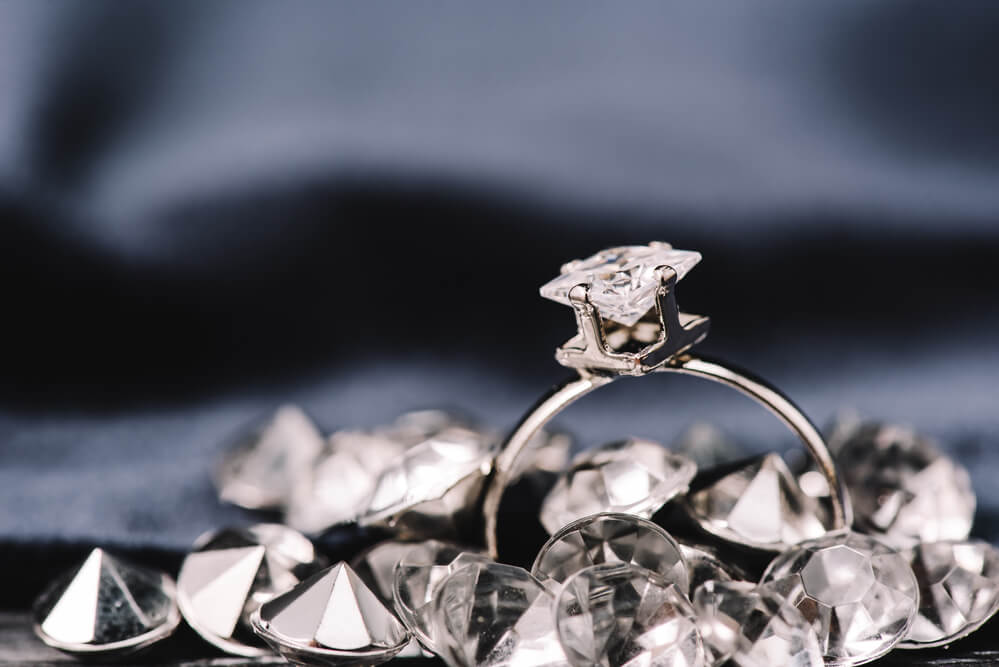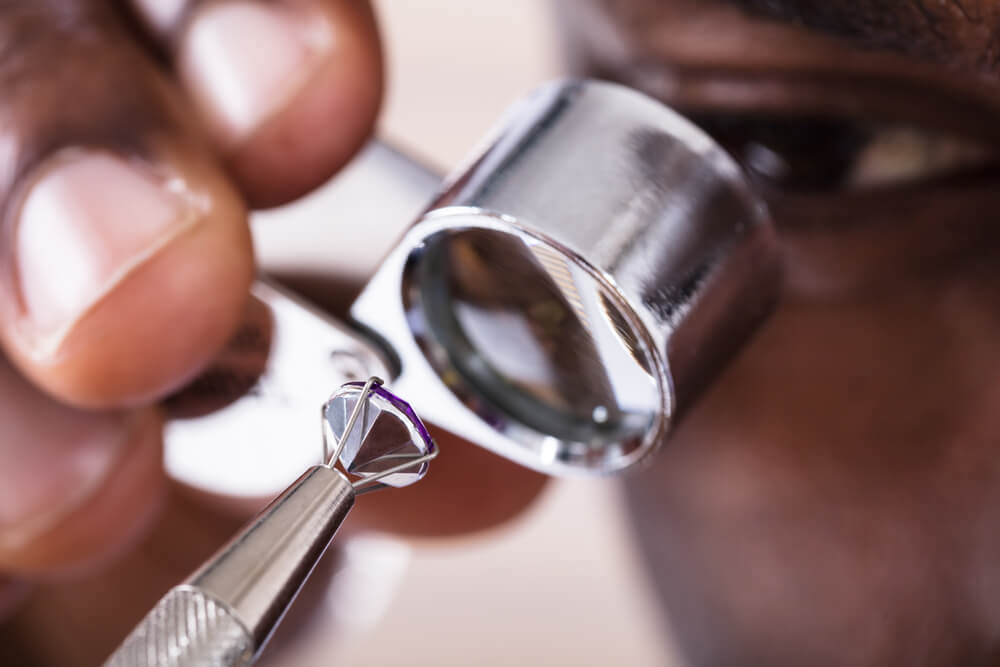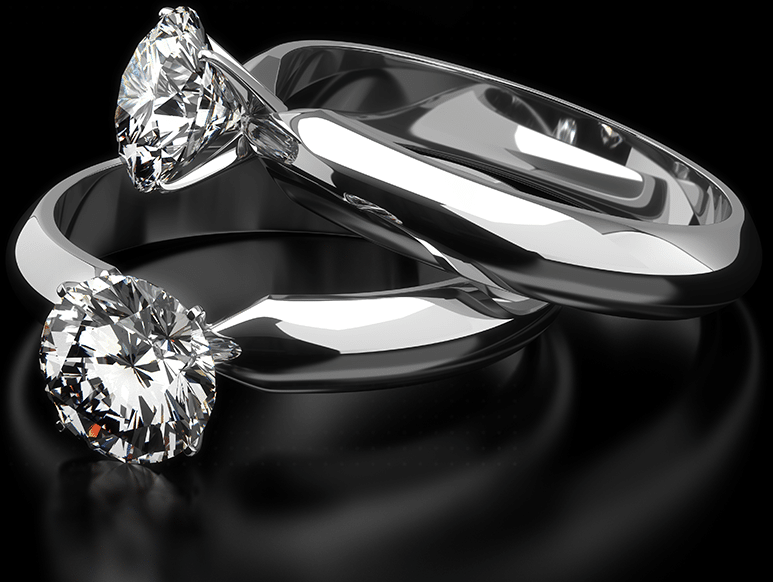10 Ways To Tell If A Diamond Is Fake Or Real
-
Shira-Diamonds
-
0 Comment
You know what they say, “Diamonds are a girl’s best friend.” But in this day and age, how can you be sure that the diamond you’re buying is the real deal?
With all of the advanced technology available, it’s getting harder and harder to tell if a diamond is authentic or not. As such, you have to be vigilant about the jewelry you’ll be buying to make sure that you’re not getting scammed.
Real vs Fake Diamonds
Real diamonds have high value because of their unique properties that make them perfect for jewelry. They are the hardest natural material found on Earth, meaning they can scratch any other substance but can’t be scratched themselves.
They also have a high refractive index, which means they sparkle and shine brightly when light hits them.
On the other hand, fake diamonds are made of materials that imitate the properties of real diamonds. They may be made of cubic zirconia or moissanite, which are both harder than glass but can be scratched easily.
Fake diamonds also have a lower refractive index, so they don’t sparkle as much as real diamonds do.
It’s always better to invest in real diamonds because of their timeless beauty and value.
The Diamond Test
But if you’re not sure how to tell if a diamond is legit or not, here are some ways to tell if your diamond is real:
Do the Water Test
- One method you can take is the water test. It is pretty simple and straightforward.
- All you need is a glass and some water.
- Fill the glass with water until it’s about three-quarters full then carefully drop your stone into the water.
- If it sinks to the bottom, it’s a real diamond because of the high density of diamonds. If it floats on top or in the middle of the glass, it is most likely a fake diamond.
This is because cubic zirconia, one of the most popular fake diamonds, is actually slightly lighter than water, so it will always float. Meanwhile, pure diamonds will always sink because they are denser than water.
Try the Fog Test
Another approach to answer the question, “How to tell if a diamond is real?” is the fog test. It entails breathing on the stone and seeing how long it takes for the fog to dissipate. If it’s a fake, the moisture will dissipate almost immediately while a real diamond will hold the fog for a few seconds longer.
Diamonds are good at conducting heat. As such, when you breathe on a diamond, the moisture in your breath condenses on the stone because it can’t dissipate the heat quickly enough.
So if you’re trying to figure out how to tell if a diamond is real or fake, this is one way to do it.
Inspect the Setting and Mount

Think about it. A real diamond is expensive, so it would be set in an expensive metal. A fake diamond is less costly, so it would be set in a cheaper material.
Other precious metals that may be used for the setting and mount of a diamond ring are white gold, platinum, and palladium.
Additionally, if you see the letters “C.Z.” stamp or engraving on the band, it’s likely that the ring is set with a cubic zirconia instead of a diamond.
Roast in High Temperature
As mentioned, diamonds are great conductors of heat. Therefore, if you roast a diamond at a high temperature, it will dissipate the heat quickly and won’t get hot. Other faux diamond materials won’t be able to withstand the heat and will either melt or change shape.
- To do the heat test right, you can fill a glass with cold water.
- Then, hold the stone with plyers or fire-resistant gloves and heat it with a lighter for about 40 seconds.
- Dunk the stone into the water right away. If it shatters, it’s most likely fake since a real diamond can withstand high heat and shouldn’t be affected by extreme changes in temperature.
This test checks the stone’s quality and strength. The rapid expansion and contraction caused by the heat can break weaker materials, particularly glass or cubic zirconia.
Examine Under UV Light
You can take your diamond and look at it under an ultraviolet (UV) light. If the diamond is real, then it will fluoresce a blue color. If it is fake, then it will either not emit any color or will glow some other color like green, yellow, or orange.
This test isn’t foolproof, though. There are some diamonds that don’t emit a blue-colored glow. This is because they don’t have enough nitrogen in them.
So, if you see no color or a different color, the diamond might still be real. Nonetheless, you can combine this test with other methods in our list to verify whether you have a real diamond or not.
Grab Some Newspapers
Another easy home test you can do is to check for a diamond’s refractivity.
- Take a couple of sheets of newspaper and place them on a table.
- Place the stone on top of the paper and look at it from different angles.
- If you see a series of tiny arrows or double images, then congratulations, you’ve got yourself a diamond!
However, if you can read through the stone, then it’s probably not a diamond. This is because diamonds have an incredibly high refractive index, meaning that they bend and split light in a very specific way.
So, if you can see through your stone, then it’s likely made of glass or cubic zirconia.
The Dot Test
The dot test is an alternative to newspapers because let’s face it, we all read the news online nowadays.
- To perform the dot test, you need a pen with a fine point.
- Draw a small dot on the stone in question.
- Then, look at the diamond from different angles. If the dot disappears, it’s because the stone is refracting light off its surface and into your eye.
This means that the diamond is real. If you can still see the dot, it means that the diamond is fake.
It’s the same refractive test with the newspapers. Diamonds are highly refractive, which means the light bounces in many directions.
Watch How It Sparkles
On the other hand, diamonds are also highly reflective. This means that when light enters the stone, it reflects off of the facets (the flat polished surfaces on a diamond) and exits the stone.
This is what causes that bright sparkle that we associate with diamonds.
If you hold a diamond up to your eye and look at it, you should see an array of tiny sparkles.
The best thing about this test is that you just need your eyes to verify if you have a real diamond. Check if there are bright shimmers of light that bounce off of the stone and colorful light reflections.
If you don’t see anything special, then it is probably a fake diamond.
You can also do this at night using a white lamp. Real diamonds reflect white light very well, so you should see a display of colors if it is the real thing.
For comparison, you can hold up a cubic zirconia stone as well and check the differences in their reflectivity.
Use a Loupe

Most professionals have a loupe to determine this factor, which is a special magnifying glass specifically designed for this purpose.
You may have seen this in movies where someone hovers an eyeglass over one eye and inspects a diamond. With this tool, professionals will check for things like air bubbles, fractures, and other imperfections that can help them tell if a diamond is real or fake.
Blemishes and imperfections are called inclusions. They’ll also be highly visible under a loupe. Real diamonds will usually have small inclusions, while fake diamonds often have large ones that are more easily seen.
Experts can also check a diamond’s symmetry and cuts. The ideal cut for a round brilliant diamond is 58 facets, or 57 if it has a culet (the tiny point on the bottom of the stone). If you see a diamond with fewer than this, it’s likely fake.
Have an Expert Perform Conductivity Tests
Professional gemologists will also have a thermal conductivity probe or meter to test how well heat passes through the stone. Diamonds are excellent conductors of heat, so if the stone being tested is a diamond, it will cool quickly.
On the other hand, if a stone disperses heat slowly, it’s likely a fake diamond. However, synthetic moissanite stones will have the same conductivity readings as diamonds, so this test is not foolproof.
Another conductivity test is to check how well the stone transmits electricity. This test is a bit more complicated, and should only be performed by a professional. A real diamond not only conducts heat well but also electrical currents.
Gemologists and expert jewelers will use an electrical tester to check for conduction in a diamond. If the stone is real, then it will conduct electricity.
However, if the rock is fake, then the electricity will not flow through it as well. This is a more effective method to verify the authenticity of a stone since moissanite won’t be able to conduct electricity effectively.
Takeaway
It’s easy to think that all diamonds are the same, but that is not the case. There are fake diamonds and real diamonds, and it’s important to be able to tell the difference.
Some stones are made from materials like cubic zirconia or moissanite, which means they are not as rare or valuable as real diamonds. If you are buying a diamond ring or other piece of jewelry, you want to make sure it is the real thing. After all, you’re spending a lot of money on it.
Moreover, some people may try to pass off a fake diamond as a real one. This can happen if you are buying a diamond from someone you don’t know, such as at a flea market or online. It’s important to be able to spot a fake so you don’t get ripped off.
Take note that you should also go to expert jewelers or gemologists to verify the authenticity of your jewelry. Real professionals will have the tools and skills to confirm whether you have a real diamond or not.
In fact, you should also go to different experts if you intend to confirm the genuineness of your stone.












